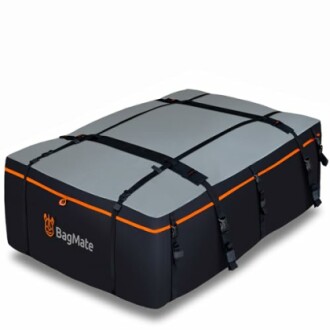
Understanding Roof Rack Installation Requirements
- Different types of roof racks have distinct installation requirements.
- Ensure compatibility with your vehicle before purchasing a roof rack.
- Consider the weight capacity and safety features of installed racks.
- Proper installation procedures can prevent damage during use.
When it comes to enhancing your vehicle's utility for outdoor adventures, understanding roof rack installation requirements is essential. A roof rack allows you to transport gear, luggage, and sports equipment securely on top of your vehicle. However, not all racks install the same way, and improper installation can lead to damage, accidents, or loss of your precious gear.
Types of Roof Racks
Before diving into installation requirements, it's important to know the different types of roof racks available:
- Crossbars: The most common type, providing a base for attaching cargo boxes, bike racks, and other accessories.
- Fixed Railing Racks: Permanently mounted on specific vehicles, offering an easy way to attach other accessories without the need for crossbars.
- Removable Racks: Can be installed and removed according to needs; ideal for people who don't frequently use a roof rack.
- Soft Roof Racks: Ideal for temporary use, these racks often use straps that secure gear directly to the roof without the need for crossbars or rails.
Key Installation Requirements
Depending on the type of roof rack you choose, installation requirements may vary. Here are some crucial factors to consider:
| Type of Roof Rack | Installation Method | Requirements |
|---|---|---|
| Crossbars | Clamp-on or Through-the-roof brackets | Compatibility with vehicle's roof and instructions from the manufacturer. |
| Fixed Railing Racks | Permanently installed | Professional installation may be needed; ensure proper alignment with vehicle's design. |
| Removable Racks | Tool-free or manual installation | Follow the instructions for securing and removing the racks safely. |
| Soft Roof Racks | Strap method | Ensure the straps are tightened securely to avoid slippage during travel. |
Safety Considerations
While installing your roof rack, keep these safety tips in mind:
- Always check the weight limits of both the roof rack and your vehicle to prevent overloading.
- Regularly inspect the rack's attachment points and hardware for looseness or corrosion.
- Make sure items are securely strapped and balanced to prevent swaying or falling off during transit.
Product Highlight: Heavy-Duty Waterproof Roof Bag
Heavy-Duty Waterproof Roof Bag
This 23 cubic feet rooftop cargo carrier is perfect for road trips and camping, providing ample space and easy installation for any vehicle.
Learn MoreInstallation Steps
Here’s a general guide to help you with the installation of most roof racks:
- Ensure your vehicle's roof is clean and free of debris.
- Gather all necessary tools and components included in the roof rack package.
- Follow the manufacturer's instructions carefully for each component.
- Secure the rack onto the roof using the specified method (Clamp-on, bolt-on, or straps).
- Double-check that all fittings are tight and secure once installed.
- Test the rack by lightly shaking it to ensure stability before loading any items.
Conclusion
Understanding roof rack installation requirements is essential for maximizing the utility of your vehicle. Ensure compatibility with your vehicle, follow safety guidelines, and adhere to installation instructions for a secure setup. With the right roof rack, you'll be ready for any adventure, whether it’s camping, biking, or a family road trip.
Tips for Beginners
- Always invest in quality racks to ensure durability and safety.
- Consult your vehicle's manual for specific installation guidance.
- Consider professional installation if you are uncertain about the process.
- Explore our additional resources on Roof Racks and Boxes for more handy information!

